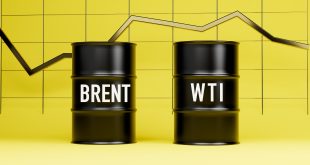China’s recent escalation in rare earth export controls has sent shockwaves through global markets, tightening its grip on materials vital for everything from semiconductors to defense systems. Announced on October 9, 2025, these measures expand restrictions to include five new elements—holmium, erbium, thulium, europium, and ytterbium—alongside seven previously controlled ones, bringing the total to 12. Foreign companies now face stringent approvals from China’s Commerce Ministry for uses involving at least 0.1% heavy rare earths, with outright denials for defense applications and case-by-case scrutiny for advanced semiconductors.
This dominance—China mines 70% of global rare earths and processes 90%—positions Beijing to wield significant leverage, especially as rules on refining technology exports kick in from November 8, 2025. The timing, just before a 90-day US-China trade truce expires, underscores a strategic play ahead of a potential Trump-Xi summit in South Korea later this month.
US-China trade frictions have intensified, with President Donald Trump threatening 100% tariffs on Chinese exports starting November 1, potentially escalating to 130% on various goods. In retaliation to US chip export bans, China’s moves mirror Washington’s tactics, banning licenses for overseas defense users and restricting semiconductor tech for 14-nanometer or advanced chips, AI, and memory layers exceeding 256. This tit-for-tat has disrupted progress toward a broader trade pact, halting months of de-escalation and risking uncontrolled economic fallout.
US Treasury Secretary Scott Bessent labeled it “China versus the world,” warning of a “bazooka” aimed at global supply chains, prompting calls for economic decoupling. Historical precedents, like China’s 2010 cutoff to Japan over territorial disputes, highlight how such restrictions can force nations to seek alternatives, as Japan did by investing in Australian mining.
Enter Australia, emerging as a pivotal player in diversifying supply chains. With reserves about one-seventh of China’s but significant deposits in key elements like neodymium for magnets in EVs, wind turbines, and military gear, Australia is pitching itself as a reliable US partner.
Prime Minister Anthony Albanese’s October 20 White House meeting with Trump focuses on critical minerals, with Resources Minister Madeleine King and mining firms briefing on opportunities like antimony. Treasurer Jim Chalmers calls it a “golden opportunity,” backed by a $1.2 billion reserve to advance processing tech and reduce China’s 90% hold on Australian lithium refinement.
Recent deals, such as Lynas Rare Earths partnering with US-based Noveon Magnetics for defense magnets, have spiked Lynas shares to 14-year highs, signaling market optimism. The US seeks direct deals via Australian ports to bypass China, aligning with broader “friend-shoring” efforts, including stakes in miners like MP Materials and pacts with Ukraine, Congo, and Pakistan.
The semiconductor sector stands at the epicenter of these disruptions. Rare earths are indispensable for advanced chips in AI, smartphones, and high-performance computing, and China’s controls could inflate costs and cause shortages.
Shares in Chinese firms like China Northern Rare Earth surged up to 10%, while US counterparts like Energy Fuels rose 9%, reflecting volatility. Broader impacts ripple to EVs, wind energy, and defense, where even partial cuts could shave 1% off US GDP over two years. South Korea’s chip giants like Samsung and SK Hynix are assessing effects, with plans for bilateral talks to mitigate damage.
Experts foresee a structural shift toward bifurcation, with China localizing its chains and the West accelerating alternatives. Some analysts still stress joint US-Australia ventures in processing to counter China’s lead, warning of mismatched priorities—US defense versus Australia’s clean energy focus.
Some mining veterans, deem the timing “exquisite” for tying alliances closer. Yet, challenges loom: Australia’s economic ties to China (a third of exports) create dilemmas, and building non-Chinese chains demands time and investment.
US efforts are often described as “haphazard”, by experts who are urging coherent strategies initiated years ago. As talks unfold, successful diversification could stabilize prices and foster resilience, but failure risks deeper entrenchment in a fragmented world economy, demanding vigilant adaptation from all stakeholders.
Home / Market Update / Commodities / Explainer: Why Australia Considers Rare Earth Standoff As A Chance
Check Also
U.S. Bond Yields Rise After Fed Officials Warn Against Rapid Rate Cuts
U.S. Treasury yields climbed on Friday following cautionary remarks from Chicago Federal Reserve President Austan …
 Noor Trends News, Technical Analysis, Educational Tools and Recommendations
Noor Trends News, Technical Analysis, Educational Tools and Recommendations




